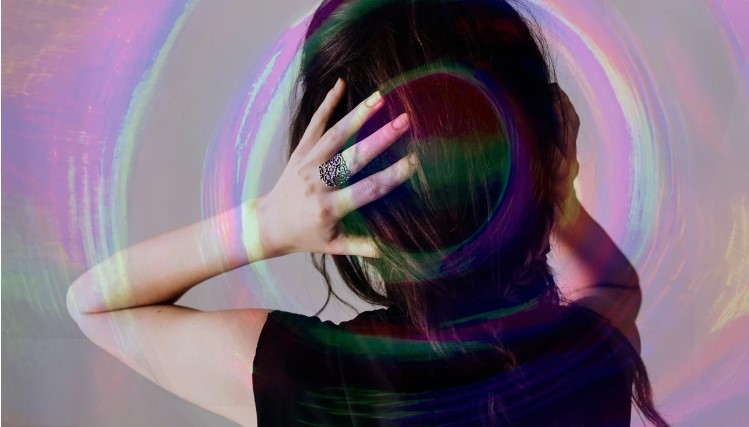
Migraine is more than just a headache; it’s a neurological condition. While intense headaches are a primary feature of migraine attacks, they are accompanied by various other symptoms, one of which is aura.
An aura is a collection of symptoms that can occur before or during a migraine episode. These symptoms can affect vision, sensation, or speech, and typically last between 20 to 60 minutes.
According to the American Migraine Foundation, approximately 25 to 30 percent of people with migraines experience auras. These auras can serve as a warning sign that a migraine is imminent or can occur during the migraine attack itself. However, they do not accompany every migraine episode.
Understanding more about migraine auras can help you recognize them early, allowing you to take necessary medications and prepare for the impending migraine attack.
What Does a Visual Aura Feel Like?
A visual aura is characterized by visual symptoms and is the most common type of aura, occurring in 90 to 99 percent of migraine auras. In addition to being the most prevalent, visual auras are also highly varied, featuring a wide range of complex symptoms.
Common characteristics of a visual aura may include:
- Flashes of bright light
- “Foggy” vision
- Zigzag lines
- Blind spots
- Small bright dots
- A sensation as if viewing through heat waves or water
What Does a Sensory Aura Feel Like?
Sensory auras involve sensory disturbances and are present in approximately 36 percent of migraine auras. These disturbances can occur either with or without a visual aura.
The main symptoms of a sensory aura include:
- Feelings of numbness or tingling
- A “pins and needles” sensation
The tingling may start in one arm and then travel up to one side of the face, lips, or tongue.
What Does a Dysphasic Aura Feel Like?
A dysphasic aura involves disturbances in speech and language and occurs in about 10 percent of migraine auras.
Symptoms may include:
- Slurred speech
- Mumbling
- Difficulty forming the correct words
Other Symptoms of Migraine Attacks
In addition to aura, many other symptoms can accompany migraine attacks. These symptoms can vary depending on the stage or phase of the migraine, as well as among individuals and for each specific attack.
Prodrome
The prodrome stage, also known as the premonitory phase, can last from a few hours to several days. Most people living with migraines experience prodrome, though not necessarily with every migraine attack. During this phase, taking medications, avoiding known triggers, and practicing relaxation techniques may help prevent the headache.
Common prodrome symptoms may include:
- Fatigue
- Mood changes
- Thirst
- Food cravings
- Irritability
- Yawning
- Sore neck
- Constipation
Aura
Symptoms of aura typically develop over at least 5 minutes and can last up to 1 hour, although in approximately 20 percent of individuals, the aura can persist even longer. Some people experience aura not before the headache phase, but after the headache has started.
Symptoms of aura can include:
- Seeing bright spots or flashes of light
- Vision loss or dark spots
- Tingling in an arm or leg, similar to “pins and needles”
- Trouble speaking
- Ringing in the ears
- Olfactory auras: heightened sense of smell and the perception of imaginary odors
Headache
The headache phase is what most people likely think of when they envision a migraine. This phase is marked by pain on one or both sides of the head, and can last anywhere from a few hours to up to 3 days. The intensity and duration of headaches can vary from person to person and from one attack to another.
In addition to head pain, symptoms can include:
- High sensitivity to light, sounds, or smells
- Nausea or vomiting
- Abdominal pain or heartburn
- Loss of appetite
- Blurred vision
- Lightheadedness
- Fainting
- Worsening pain with physical activity
Postdrome
The postdrome phase, also known as the “migraine hangover,” follows the headache phase. Not everyone with migraine experiences postdrome, but approximately 80 percent of individuals do. It may not occur with every migraine attack.
Symptoms of postdrome can include:
- Fatigue
- Body aches
- Trouble concentrating
- Sensitivity to light
- Dizziness
When to Seek Treatment for Migraine
If your headaches or migraine attacks are interfering with your daily life or functioning, it’s important to see a doctor. For those who have migraines with aura, treatment with a combination of acute and preventative medication may be necessary.
A doctor can perform an examination to determine whether the cause of your symptoms is migraine or something else entirely. An accurate diagnosis can help you receive appropriate treatment.
Medical attention is necessary if your symptoms:
- Have a sudden onset
- Last more than an hour
- Don’t completely resolve
